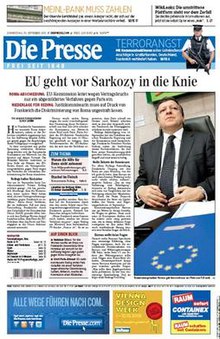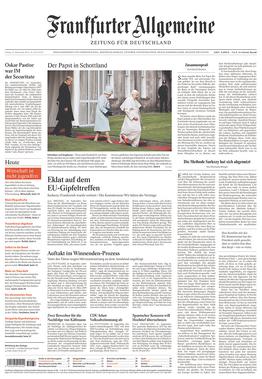
The Frankfurter Allgemeine Zeitung is a German newspaper founded in 1949. It is published daily in Frankfurt. Its Sunday edition is the Frankfurter Allgemeine Sonntagszeitung.

The Neue Zürcher Zeitung is a Swiss, German-language daily newspaper, published by NZZ Mediengruppe in Zürich. The paper was founded in 1780. It was described as having a reputation as a high-quality newspaper, as the Swiss-German newspaper of record, and for objective and detailed reports on international affairs.
Der Standard is an Austrian daily newspaper published in Vienna. It is considered a newspaper of record for Austria.

The Frankfurter Rundschau (FR) is a German daily newspaper, based in Frankfurt am Main.The Rundschau's editorial stance is social liberal. It holds that "independence, social justice and fairness" underlie its journalism. In Post-war Germany Frankfurter Rundschau was for decades a leading force of German press. Die newspaper was one of the first, which get licencened by the US military administration in 1945 and had a traditional stabel social democratic, antifastic and trade union stand. Starting with the decline of printed daily newspapers in the 2000s, the FR changed ownership several times, reduced its editorial team dramatically and today has little national significance.
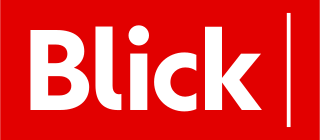
Blick (View) is a Swiss German-language daily newspaper and online news website covering current affairs, entertainment, sports and lifestyle. Based in Zürich, it is the largest newspaper in Switzerland with a print circulation of around 285,000. The newspaper has been printed continuously since its inception in 1959.

Kleine Zeitung is an Austrian newspaper based in Graz and Klagenfurt. As the largest regional newspaper in Austria, covering the federal states Styria and Carinthia with East Tyrol, the paper has around 800,000 readers.

Wiener Zeitung is an Austrian newspaper. First published as the Wiennerisches Diarium in 1703, it is one of the oldest newspapers in the world. Until April 2023, it was the official gazette of the government of the Republic of Austria for legally-required announcements, such as company registrations and was also the official publishing body for laws and executive orders until 2004.

Kurier is a German-language daily newspaper based in Vienna, Austria.
St. Galler Tagblatt, commonly shortened to Tagblatt, is a Swiss German-language daily newspaper, published in St. Gallen.

Luxemburger Wort is a German-language Luxembourgish daily newspaper. There is an English edition named the Luxembourg Times. It is owned by Mediahuis Luxembourg.
Oberösterreichische Rundschau is a weekly newspaper in Upper Austria, published in 13 regional editions. In addition, there is a free Sunday newspaper Sonntags-Rundschau.
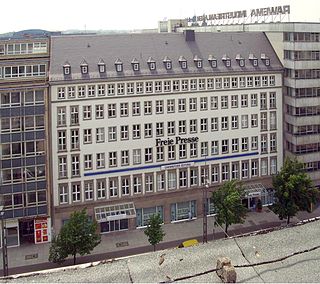
The Freie Presse is a regional daily newspaper in the Chemnitz region, Germany.
The Salzburger Nachrichten is a German-language daily newspaper published in Salzburg, Austria. It has been in circulation since 1945.
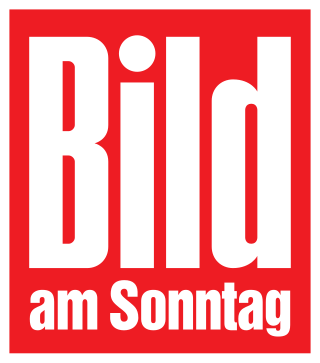
Bild am Sonntag (BamS) is the largest-selling German national Sunday newspaper published in Berlin, Germany.
News is an Austrian weekly news magazine published in German and based in Vienna, Austria. The weekly is the major news magazine in the country and has been in circulation since October 1992.
Tiroler Tageszeitung is a provincial daily newspaper published in Innsbruck, Austria. The paper has been in circulation since 1945 and is the newspaper with the widest reach in the Austrian state of Tyrol.

Vorarlberger Nachrichten is a German language regional newspaper published in Bregenz, Austria. It is one of the leading regional publications in the country and has been in circulation since 1945.
Die Rheinpfalz is a German–language regional newspaper based in Ludwigshafen, Germany. The paper is one of the leading newspapers which serve the state of Rhineland-Palatinate.

